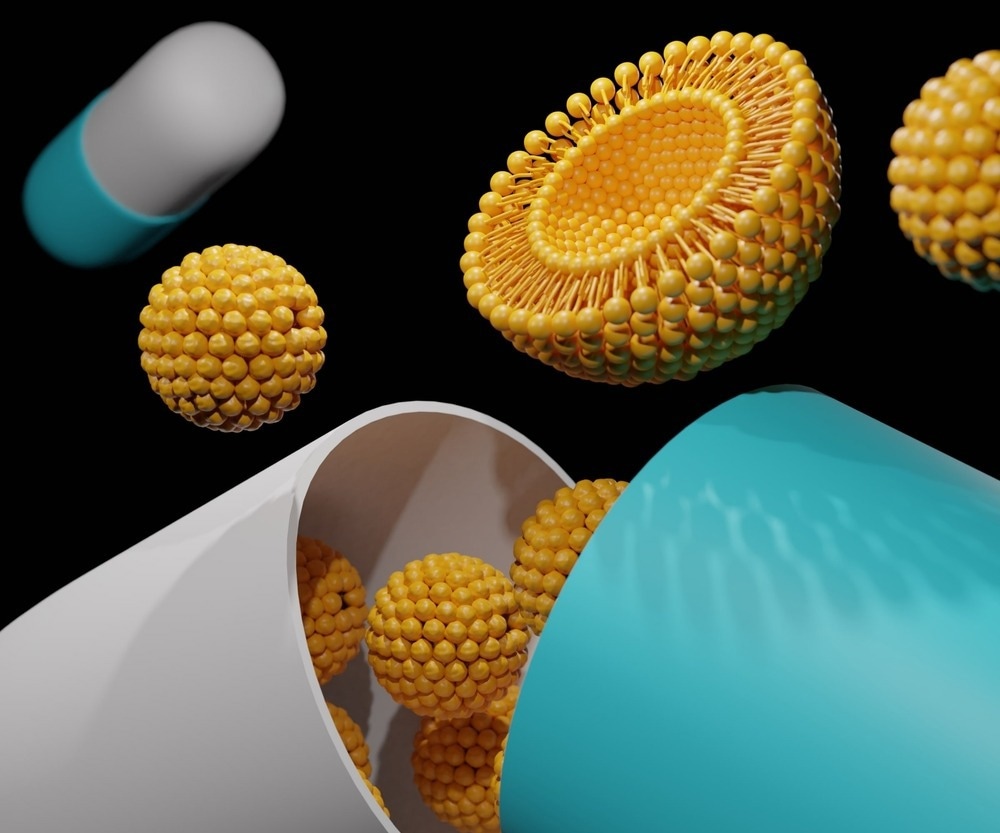In a recent article published in Scientific Reports, researchers from Iran and Germany explore the use of multi-wall carbon nanotubes (CNTs) as delivery systems for medicinal substances, particularly in cancer treatment.

Image Credit: Love Employee/Shutterstock.com
By addressing the limitations of individual drug therapies and leveraging the synergistic effects of combined treatments, this study aims to advance the field of targeted drug delivery and improve outcomes for cancer patients.
Background
Cancer remains a significant global health challenge, necessitating innovative treatment strategies to improve therapeutic outcomes and reduce side effects. Traditional cancer treatments often use multiple drugs with distinct mechanisms of action to enhance efficacy and overcome drug resistance. However, administering multiple drugs concurrently can lead to increased toxicity and adverse effects, limiting their clinical utility.
In this context, the co-delivery of synergistic drug combinations, such as curcumin (CUR) and methotrexate (MTX), holds promise for enhancing therapeutic effects while minimizing side effects. CUR, a natural compound with diverse biological properties, has shown potential in cancer treatment but faces limitations in solubility and bioavailability. MTX, a widely used chemotherapy agent, is effective against various cancers but can cause systemic toxicity at high doses.
The incorporation of multi-wall carbon nanotubes (MWCNT) in the drug delivery system offers unique properties such as high surface area, stability, and drug-loading capacity, further enhancing the therapeutic potential of the formulations.
The Current Study
MWCNTs were prepared by functionalizing them through cutting and oxidation to introduce carboxyl groups on the surface (MWCNT-COOH). This process involved treatment with a mixture of H2SO4 and hydrogen peroxide to enhance biocompatibility and reduce toxicity effects.
Bovine Serum Albumin (BSA) was utilized as a carrier for MTX to form MTX-conjugated albumin-based nanoparticles (BSA-MTX). The amidic linkages between MTX and BSA were cleaved using Proteinase K enzyme to facilitate drug release.
CUR was loaded onto the functionalized MWCNT-COOH nanoparticles to form ƒ-MWCNT-CUR-BSA-MTX dual drug delivery system. The physical properties of the formulations were assessed using Dynamic Light Scattering (DLS) and Transmission Electron Microscopy (TEM) to determine particle size and morphology. Chemical properties were analyzed through Fourier Transform Infrared Spectroscopy (FTIR) and UV/Visible spectroscopy to confirm drug loading and interactions.
The thermal behavior of the formulations was studied using Differential Scanning Calorimetry (DSC) to evaluate their stability and drug release profiles. In-vitro cytotoxicity assays were conducted using the MTT colorimetric method to evaluate the formulations' cytotoxic effects on cancer cell lines.
Cell viability and proliferation were assessed to determine the efficacy of ƒ-MWCNT-CUR-BSA-MTX in inhibiting cancer cell growth. Comparative studies were conducted using pure MWCNT, pure CUR, MTX-BSA, and ƒ-MWCNT-CUR-MTX-BSA to evaluate the synergistic effects of the dual drug delivery system.
The impact of the formulations on cell division was investigated using the MTT method to understand their mechanism of action. The therapeutic efficacy of ƒ-MWCNT-CUR-BSA-MTX was compared to pure curcumin, pure MTX-BSA, MTX, and ƒ-MWCNT alone to determine its impact on cancer treatment.
The therapeutic efficiency of the dual drug delivery system was evaluated based on the unique properties of carbon nanotubes, such as high specific surface area, chemical stability, and drug loading capacity.
Results and Discussion
The findings demonstrated the efficacy of the ƒ-MWCNT-CUR-BSA-MTX dual drug delivery system in inhibiting cancer cell growth. In-vitro cytotoxicity assays showed a significant impact on cancer cells, with the combination of CUR and MTX exhibiting a synergistic effect on MCF-7 cells. This suggests the potential of using these drugs in both the prevention and treatment of breast cancer.
The unique properties of carbon nanotubes, such as their high specific surface area, chemical stability, and drug loading capacity, played a crucial role in enhancing the therapeutic efficiency of the dual drug delivery system. The controlled release capabilities of the formulations, as demonstrated by their pH responsiveness and stability, further supported their potential for targeted drug delivery.
The combination of CUR and BSA-MTX showed increased anti-cancer effects in an additive or synergistic manner, indicating a promising strategy for the treatment and chemoprevention of breast cancer. Despite limitations in solubility and absorption of the drugs, the use of nanocarrier-based delivery systems, such as ƒ-MWCNT-CUR-BSA-MTX, offers a viable solution to overcome these challenges and improve bioavailability.
Conclusion
The research highlights the promising role of multi-wall carbon nanotube surface-based functional nanoparticles in stimuli-responsive dual pharmaceutical compound delivery for cancer therapy.
The synergistic effects of combining curcumin and methotrexate with CNTs demonstrate enhanced efficacy against cancer cells. This innovative approach holds potential for further development in targeted drug delivery systems for improved cancer treatment outcomes.
Journal Reference
Nabitabar, M., et al. (2024). Multi-wall carbon Nanotube surface-based functional nanoparticles for stimuli-responsive dual pharmaceutical compound delivery. Scientific Reports. doi.org/10.1038/s41598-024-59745-6